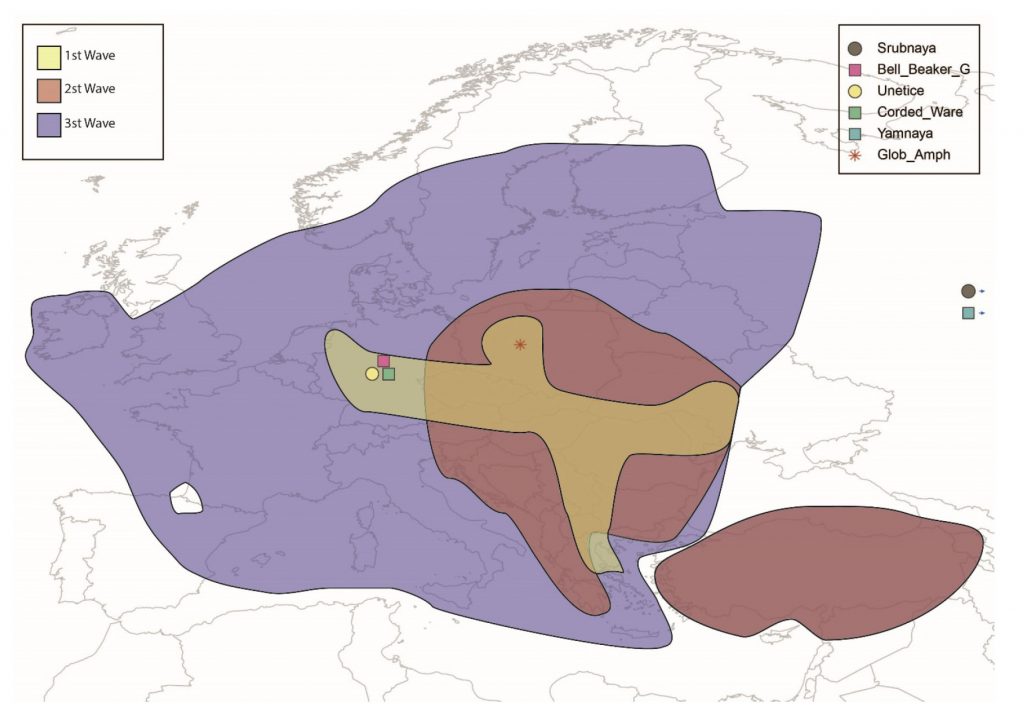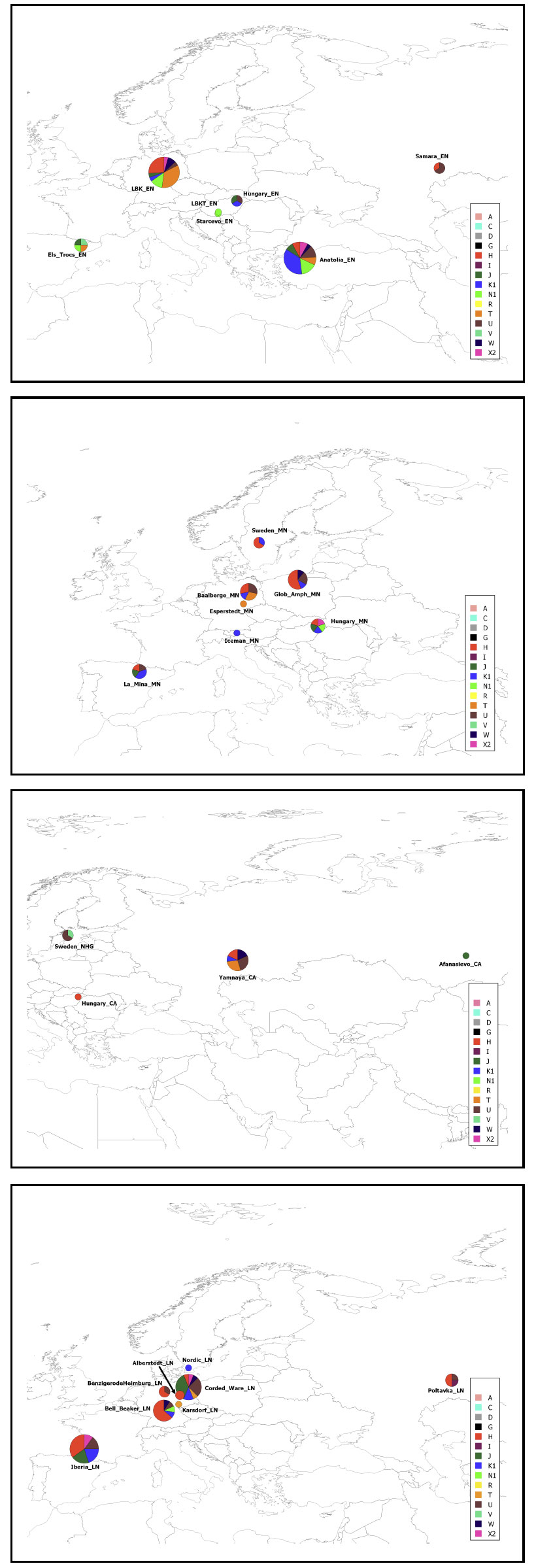New open access article, Genome diversity in the Neolithic Globular Amphorae culture and the spread of Indo-European languages, by Tassi et al. (2017).
Abstract:
It is unclear whether Indo-European languages in Europe spread from the Pontic steppes in the late Neolithic, or from Anatolia in the Early Neolithic. Under the former hypothesis, people of the Globular Amphorae culture (GAC) would be descended from Eastern ancestors, likely representing the Yamnaya culture. However, nuclear (six individuals typed for 597 573 SNPs) and mitochondrial (11 complete sequences) DNA from the GAC appear closer to those of earlier Neolithic groups than to the DNA of all other populations related to the Pontic steppe migration. Explicit comparisons of alternative demographic models via approximate Bayesian computation confirmed this pattern. These results are not in contrast to Late Neolithic gene flow from the Pontic steppes into Central Europe. However, they add nuance to this model, showing that the eastern affinities of the GAC in the archaeological record reflect cultural influences from other groups from the East, rather than the movement of people.

Excerpt, from the discussion:
In its classical formulation, the Kurgan hypothesis, i.e. a late Neolithic spread of proto-Indo-European languages from the Pontic steppes, regards the GAC people as largely descended from Late Neolithic ancestors from the East, most likely representing the Yamna culture; these populations then continued their Westward movement, giving rise to the later Corded Ware and Bell Beaker cultures. Gimbutas [23] suggested that the spread of Indo-European languages involved conflict, with eastern populations spreading their languages and customs to previously established European groups, which implies some degree of demographic change in the areas affected by the process. The genomic variation observed in GAC individuals from Kierzkowo, Poland, does not seem to agree with this view. Indeed, at the nuclear level, the GAC people show minor genetic affinities with the other populations related with the Kurgan Hypothesis, including the Yamna. On the contrary, they are similar to Early-Middle Neolithic populations, even geographically distant ones, from Iberia or Sweden. As already found for other Late Neolithic populations [18], in the GAC people’s genome there is a component related to those of much earlier hunting-gathering communities, probably a sign of admixture with them. At the nuclear level, there is a recognizable genealogical continuity from Yamna to Corded Ware. However, the view that the GAC people represented an intermediate phase in this large-scale migration finds no support in bi-dimensional representations of genome diversity (PCA and MDS), ADMIXTURE graphs, or in the set of estimated f3-statistics.

Together with Globular Amphora culture samples from Mathieson et al. (2017), this suggests that Kristiansen’s Indo-European Corded Ware Theory is wrong, even in its latest revised models of 2017.

checked by her in 1995. The symbols refer to the ancient populations considered in the ABC analysis
On the other hand, the article’s genetic finds have some interesting connections in terms of mtDNA phylogeography, but without a proper archaeological model it is difficult to explain them.

Text and images from the article under Creative Commons Attribution 4.0 license.
Discovered first via Bernard Sécher’s blog.
See also:
- The renewed ‘Kurgan model’ of Kristian Kristiansen and the Danish school: “The Indo-European Corded Ware Theory”
- Correlation does not mean causation: the damage of the ‘Yamnaya ancestral component’, and the ‘Future America’ hypothesis
- New Ukraine Eneolithic sample from late Sredni Stog, near homeland of the Corded Ware culture
- Something is very wrong with models based on the so-called ‘steppe admixture’ – and archaeologists are catching up
- Germanic–Balto-Slavic and Satem (‘Indo-Slavonic’) dialect revisionism by amateur geneticists, or why R1a lineages *must* have spoken Proto-Indo-European
- Heyd, Mallory, and Prescott were right about Bell Beakers